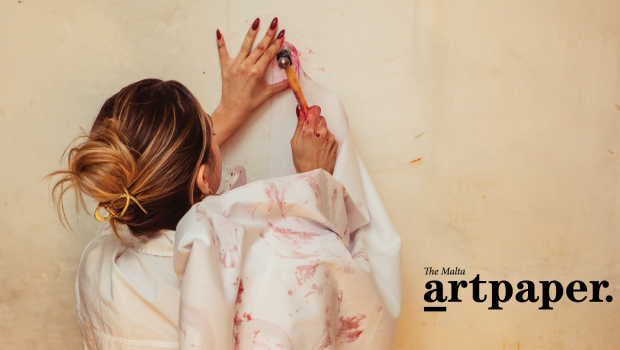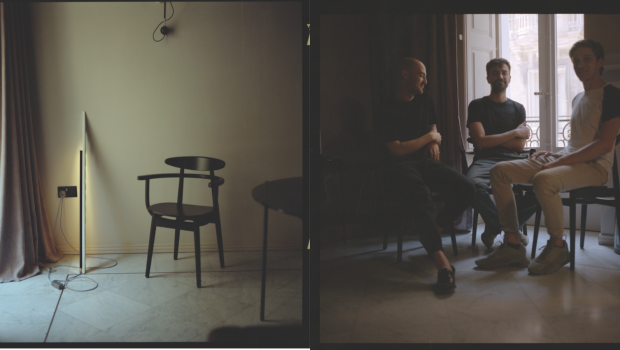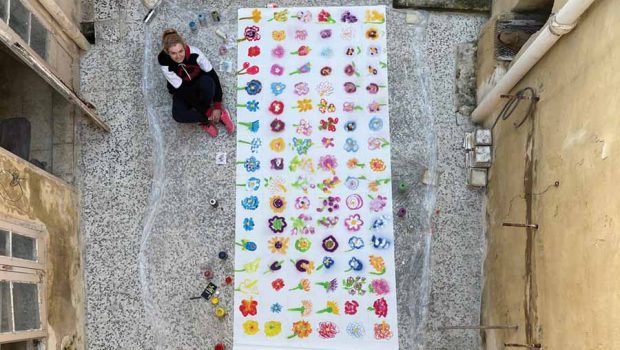The Art of War and Remembering
Sometimes, after work, when I leave my office and turn the corner into a street lined with cafes and bars, I get a feeling of dread I cannot easily explain. It is the twilight hour when darkness falls suddenly and the town’s pale walls are dipped in the colours of the night – black and purple and gold. By Konrad Buhagiar

I struggle past the crowd of nocturnal creatures that emerge from the shadows in their short, tight dresses and branded suits. They talk loudly and gesticulate, and their twisted faces turn up to the dusty light of a street lamp. The men have darting, predatory eyes and the ladies flirt brazenly above fleshy bosoms that quiver to the rhythm of their lusty laughter. The air is thick with perfume and desire, punctuated by cigarettes and red wine. I can’t help but think, as I make my way through the clamorous crowd, of the expressionist paintings that depict the decadent Berlin nightlife of the interwar period, with their heavy, brooding premonition of war rumbling on the horizon.
The explanation for my foreboding is all around me. Several exhibitions on the theme of war and destruction have recently been organized in major museums all around the world, Hannah Arendt’s 1951 book about totalitarianism is flying off the shelves and, only last month, on the 4th of February, a masterwork by George Grosz entitled Hitler in Hell, that was privately owned by the Grosz family and recently acquired by the Deutsche Historisches Museum, was unveiled in Berlin. The exiled painter – a communist, pioneer of the irreverent Dada art movement, and a fierce critic of Hitler’s nationalism – described the painting as a representation of the dictator as a ‘fascist monster or as an apocalyptic beast’ and depicted him presiding over an underworld of mass death and destruction.
Social unrest and political upheaval were rife during the 1920s before Grosz emigrated to the US, particularly in Germany where inflation and mass unemployment were the consequence of the defeat suffered during the Great War. Many New Objectivity (Neue Sachlichkeit) artists depicted life in the big city, the social inequality that resulted from economic depression, increased movement provided by new means of transport, growing suburbs were labourers’ housing and new factories belching smoke blurred the boundaries of the traditional town.
‘Aftermath: Art in the Wake of World War One’, an exhibition that showed at the Tate Britain in 2018, tackled the social themes of this period from a political perspective. In Britain and Germany, the women’s rights movement began to bear fruit and women were able to vote for the first time. Their increased presence in the workforce gave them greater economic freedom and independence and, as a result, their appearance in urban space, and indeed in the artistic representations of the latter, became widespread. Not only did they populate the streets and squares and gardens of the city but also the public spaces of entertainment, the theatres and bars and clubs, with their masculine clothes and short, bobbed hair, alongside the ubiquitous prostitute in varying state of undress. Urban society is represented as either as a hotbed of decadence, perversity and moral corruption, or as a springboard to new opportunities. The ordinary worker, on the other hand, as well as the wounded soldier, are often presented as heroic figures against a backdrop of the Jazz and dance culture that swept across the London Paris and Berlin. The city, transformed into a pleasure-seeking hub, offered the facilities necessary for a release from the difficulties and drudgery of daily life.
An exhibition on a similar theme is currently showing at Tate Modern in London. Entitled ‘Magic Realism: Art in Weimar Germany 1919-33’, the impressive mixture of eros and thanatos, sex and death, depicted in the paintings exhibited is representative of the decadent art and literature of the period. Here, the main protagonist is the Weimar Republic, the budding German democracy established in 1919, that failed to lift the German economy from the post-war doldrums and was consequently overrun by Hitler. It seems to have found its metaphor in the cabaret image, the sensual, decadent art of Weimar’s jazz-filled nights, full of freedom and opportunity as well as of perversity and darkness.
‘Into the Night: Cabarets and Clubs in Modern Art’, another exhibition, recently closed, that showed at the Barbican Art Gallery in London, proves that these venues were not just places of entertainment. They were the city’s crucible of artistic and creative endeavour that attracted people from the fringes of society, artists, non-conformists and thrill-seekers in search of liberation and sexual and artistic experimentation. Caricatures of their flamboyant clientele filled the canvases of artists like Max Beckmann and George Grosz, together with the fragmented backdrop of an expanding, dissolving cityscape. Here, the arts flourished. Literature, design, art, music, dance and architecture all found new energy in the depths of these dark and cavernous hangouts, where the air of hedonism fed on the ineffable premonition that this revelry was not going to last.
All these prominent art manifestations seem to say that there is a common and universal anxiety informing the contemporary zeitgeist that feeds from the horrors of the not-so-distant past. Our present political moment, the election of Donald Trump, Brexit and what Arendt meant when she defined totalitarianism as a form of ‘organised loneliness’, gives us a sense that a crisis is occurring that we do not know how to address. The main subject of the inter-war artists whose work is exhibited here is certainly the isolation of modern life. It had its solution in transient and ephemeral entertainment. But even as the lonely individual found temporary solace and enjoyed the short-lived limelight, war and mass-extermination were silently being conceived back-stage. Arendt’s focus, too, was on the isolated individual who has lost a kind of rootedness in the world and is therefore prey to the takeover of ideology. Is this any different from our own contemporary loneliness? Spewed by globalisation and the tyranny of social media, our over-arching connectedness is also at the root of our individual loneliness. It is the ideal basis for the perception of the ‘others’ as superfluous and dispensable.
At the inauguration at the Deutsche Historisches Museum, the German Minister of State for Culture, Monika Grutters, noted that “George Grosz’ apocalyptic vision of terror looks like an appeal, like a warning against forgetting. It is works of art like this that help us learn the right lessons from history.”

Erna Schmidt – Carol, Chansonette, 1929 © Estate Erna Schmidt – Caroll 
Rudolf Schlichter, Jenny, 1923, Von der Heydt Museum Wuppertal © Estate of Rudolf Schlichter 
George Grosz, Suicide, 1916








